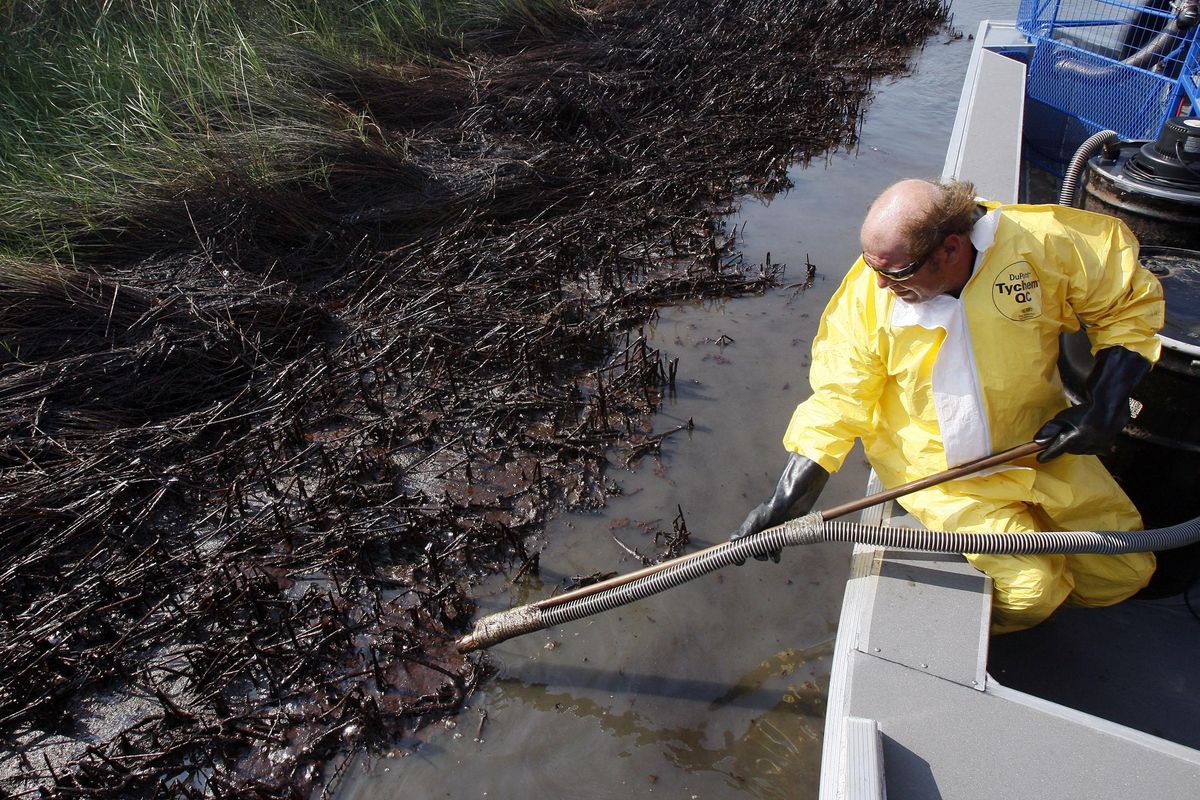Taking the measure of clean
Amid promising signs, many urge caution

MIAMI – After more than three months, BP appears finally to have gotten a firm grasp on its runaway Deepwater Horizon well. Now the big question in the Gulf of Mexico is how, and if, an environmental mess of unprecedented scope can be cleaned up.
Only last week did federal spill managers begin discussing with state and parish leaders in Louisiana, the hardest-hit state, how to set the standards for declaring the nation’s largest offshore oil spill officially mopped up.
“How do we get to the inevitable question of how clean is clean?” said retired Coast Guard Adm. Thad Allen, the Obama administration’s point man on the spill.
There are some signs the spill may not have the cataclysmic long-term ripple effects originally feared. Conditions have clearly – and dramatically – improved in the Gulf in the two weeks since BP capped its well.
A massive slick once the size of Florida has shrunk faster than anyone expected. The Coast Guard reported blue water over the Deepwater Horizon site last week and so little floating oil that skimming vessels were burning more fuel motoring around the Gulf than they were finding.
Though incomplete, initial field surveys found less than 400 acres of oiled Louisiana marsh, with most oil collected along the outer fringes. Gov. Bobby Jindal even reopened some bayou waters to commercial fishing on Friday.
Terry Hazen, a microbial ecologist at the Lawrence Berkeley National Lab in California, credited the Gulf’s self-healing powers. Unlike the nutrient-lean waters of Alaska, still suffering lingering effects from the Exxon Valdez spill two decades ago, the Gulf teems with bacteria that eat oil and gas leaking from natural deep-sea seeps.
“Petroleum is one of the easiest toxic compounds to degrade,” Hazen said. “People forget it’s a biological substance.”
Yet even combining natural forces with months of burning, skimming and siphoning, the most optimistic estimates suggest tens of millions of gallons remain in the Gulf. Much of what remains will likely be difficult, or impossible, to capture or clean up.
Many scientists say dispersants and submerged oil are X-factors complicating cleanup and making the prospects of a quick Gulf recovery uncertain.
BP used 1.8 million gallons of Corexit, a dispersant federal environmental regulators acknowledge can kill or disrupt reproduction in everything from plankton to fish.
Federal cleanup commanders stress that they’re committed to capturing every barrel possible – and getting BP to pay for it. With slicks harder to find at sea, they’re shifting local boats from skimming to tarball patrols, a job Allen predicted would continue for at least four to six weeks.
Oceanographer Hans Graber, director of the University of Miami’s satellite sensing facility, expects oil problems to persist long after the last skimmer has docked and the last boom is packed away.
“It’s probably a fair guess to say we’re looking at years, if not tens of years, for all of this stuff to eventually come to the surface,” he said.